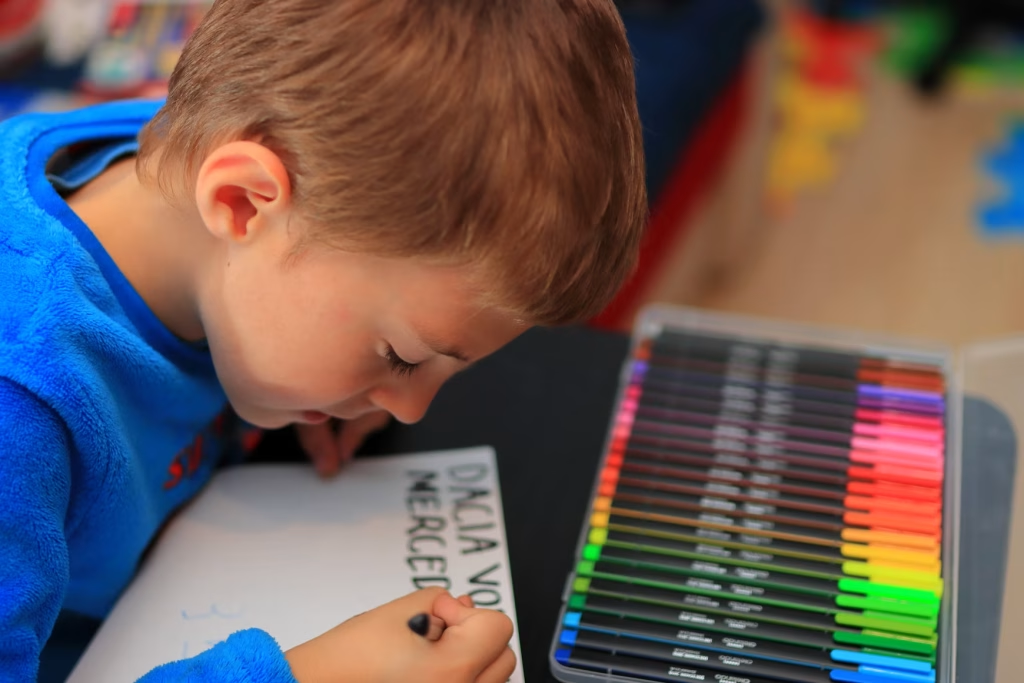
Every parent wants their child to succeed in school, but academic success doesn’t come down to natural talent or high IQ alone. In fact, some of the most academically successful kids aren’t the ones who breeze through standardized tests or memorize facts the fastest. They’re the ones who consistently practice a few simple, often overlooked habits.
The truth is, thriving in school isn’t about being perfect. It’s about being prepared, curious, and supported in the right ways. Often, the biggest difference between kids who struggle and kids who excel is how they learn to manage challenges, organize their time, and stay engaged.
If you’re wondering what really sets high-achieving students apart, here are five powerful secrets that often go unseen but make a lasting impact.
They’re Not Afraid to Make Mistakes
One of the biggest markers of long-term academic success is resilience. Kids who do well in school aren’t always the smartest in the room, but they’re often the ones most willing to fail, learn, and try again. That mindset, sometimes called a growth mindset, is essential in helping children tackle difficult subjects and keep going when things get tough.
Academically successful students don’t fall apart when they get a low grade or miss a problem. Instead, they see mistakes as part of the process. And just as important, they often have parents or teachers who frame those mistakes not as failures but as opportunities to grow. When children believe their abilities can improve with effort, they’re much more likely to stick with challenges rather than give up.
They Learn to Manage Their Own Time (Even If It’s Messy at First)
Time management isn’t a skill kids magically develop. It’s something they learn—through trial and error and plenty of support. Students who thrive academically tend to develop routines that work for them. That might look like setting aside a specific hour after school to do homework, taking breaks before frustration sets in, or planning ahead for big assignments instead of cramming at the last minute.
But what sets successful kids apart isn’t rigid perfection. It’s that they’re trusted to take ownership of their time. Parents might offer gentle structure or reminders, but they resist the urge to micromanage. Giving kids some control helps them develop independence and a sense of responsibility for their work.
It’s not always smooth at the start. There are missed deadlines, forgotten folders, and last-minute study sessions. But with consistency and patience, kids who learn to manage their time early on often carry that skill with them into high school, college, and beyond.
They’re Encouraged to Ask Questions
Academically successful kids aren’t just the ones who raise their hands when they already know the answer. They’re the ones who aren’t afraid to ask when they don’t. That curiosity, that willingness to dig deeper or admit confusion, is one of the strongest predictors of real learning.
In households where questions are welcomed, where it’s okay not to know everything, kids tend to develop a deeper engagement with the world around them. They don’t just memorize material; they understand it. They’re more likely to connect ideas between subjects and apply what they’ve learned in new ways.
It might sound simple, but this starts at home. Parents who say, “Let’s figure it out together” instead of “You should know this already” create an environment where intellectual exploration is safe. And when that curiosity is celebrated, not criticized, kids feel empowered to keep learning.

They Know School Isn’t the Only Place Learning Happens
Some of the most successful students are ones whose parents foster a love of learning outside the classroom. They read books together, explore museums on weekends, talk about current events at the dinner table, or just allow time for boredom and unstructured play.
This kind of learning doesn’t have to be fancy or expensive. It can be as simple as asking your child what they think about a movie’s ending or letting them help you cook dinner and measure ingredients. These small moments reinforce the idea that learning is a lifelong process—not just something that happens at a desk between bells.
Kids who grow up seeing education as part of everyday life are often more engaged in school because they’ve already been taught that knowledge is valuable, relevant, and fun.
They Feel Emotionally Safe at Home
Academic success doesn’t happen in a vacuum. It depends just as much on emotional stability as it does on flashcards or homework routines. Kids who do well in school often come from environments where they feel supported, loved, and safe to be themselves.
That doesn’t mean life is perfect or stress-free. It rarely is. But emotionally secure kids know they can come home and talk about a tough test, a hard teacher, or a social challenge without being judged or dismissed. They trust that the adults in their lives are on their team.
This sense of security builds confidence. And confidence builds competence. When kids aren’t spending all their energy trying to regulate stress or avoid conflict, they can focus that energy on learning, growing, and tackling the work in front of them.
Academic Success Starts Before the Report Card
When people think of high-achieving students, they often picture straight-A report cards, gifted programs, or college admissions. But the real work happens much earlier—and much more quietly.
It happens when a child is praised for effort rather than outcome. When they’re allowed to fail without being shamed. They are encouraged to explore, make decisions, and speak up. When they’re shown that learning is a gift—not a punishment.
Success in school is about more than just being “smart.” It’s about being emotionally supported, mentally curious, and resilient enough to keep going, even when it’s hard.
What learning habit or mindset helped you most when you were growing up, or what do you wish someone had taught you sooner?
Read More:
School Success Starts at Home—Here’s How to Prep Your Kids
The Surprising Ways Children Learn Best Outside School
Riley is an Arizona native with over nine years of writing experience. From personal finance to travel to digital marketing to pop culture, she’s written about everything under the sun. When she’s not writing, she’s spending her time outside, reading, or cuddling with her two corgis.



















